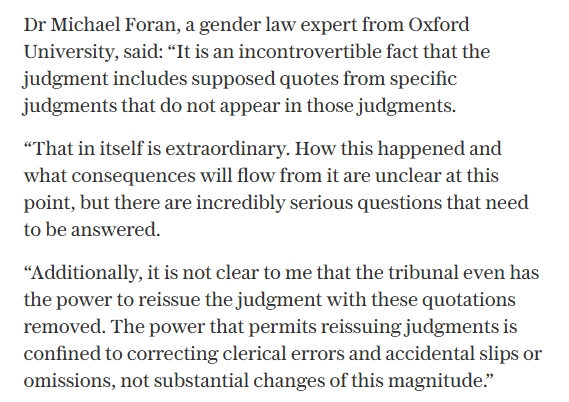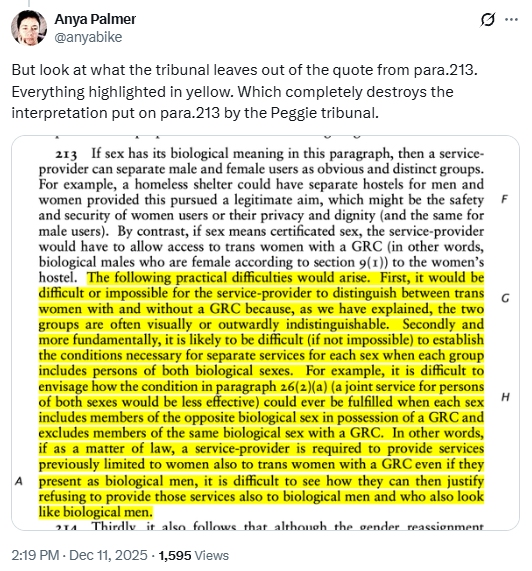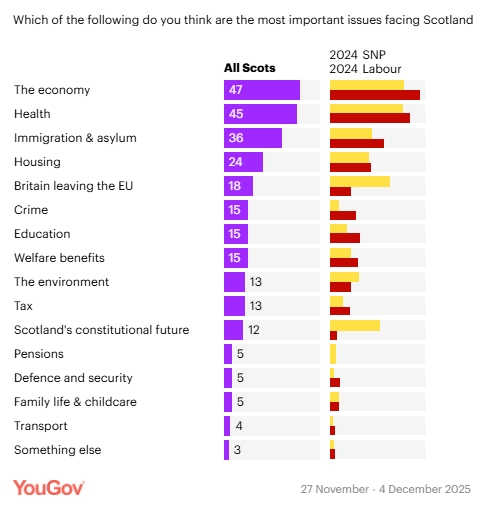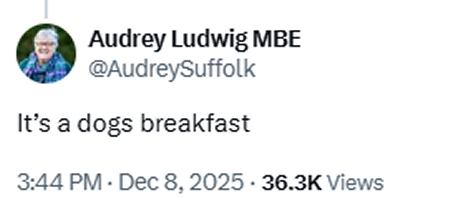Trump, Tariffs and Trade
There is a giant problem that commentators are ignoring. The United States’ trade deficit is of incredible proportions and is only sustainable because the dollar is the world’s reserve currency – a status it is going to lose. The US trade deficit in 2024 was approximately 1.2 trillion dollars. GDP was approximately 30.1 trillion dollars. […] The post Trump, Tariffs and Trade appeared first on Craig Murray.

There is a giant problem that commentators are ignoring. The United States’ trade deficit is of incredible proportions and is only sustainable because the dollar is the world’s reserve currency – a status it is going to lose.
The US trade deficit in 2024 was approximately 1.2 trillion dollars. GDP was approximately 30.1 trillion dollars. That’s a trade deficit of an eye-watering 4% of GDP. By contrast, the EU had no significant trade deficit as a percentage of GDP. Zero. Even the chronic UK trade deficit was only 2.2% of GDP.
Does it matter? Well, historically not much.
The US, as the world’s reserve currency, has been able simply to create more dollars through bonds or quantitive easing to finance its trade deficit. Nobody – including the US Federal Reserve – really knows how many dollars exist in the world. On the wide M3 measure encompassing cash, bank accounts, government bonds and all other instantly convertible dollar denominated instruments, it is believed there are about 21 trillion dollars in the world. (This is a measure of money, not of assets such as property and shares).
Nobody knows how much of this money is held outside the United States; about 65% seems a broad consensus but you can find estimates from reputable institutions ranging from 45% to 75%.
Because the US is the world’s reserve currency and essential to trade, at least half and probably most dollars exist outside the US economy. That is what is unique about having the world’s reserve currency. It means nations will always be willing to borrow from you more money you have just created, to finance their purchases of oil, grain and other essentials and luxuries.
What prevents governments in general from just printing more money is fear of inflationary effects by devaluing the currency, (though the notion that this is a simple relationship is less prevalent now than at the height of monetarism). However the unique advantage of the United States is that any domestic inflationary effect from creating more dollars is effectively buffered by the fact that most dollars are not in your economy, they are in other people’s economies, or sitting in overseas reserves. You can thus create dollars without creating much domestic inflation.
So it is great to have the world’s reserve currency. There is no danger of the US not being able to finance trillion dollar trade deficits in the next few years. But for how long?
What the trade deficit actually is, in practice, is the world giving the USA astonishing quantities of very real goods in exchange for some transferred data or bits of paper. That depends on a confidence which is waning.
In the simplest of terms, in 2000 the USA had approximately 30% of world GDP and China approximately 4%. Now the USA has approximately 26% and China approximately 18%. In manufacturing, China has overtaken the USA.
Attaining world reserve currency status ultimately depends on trust around the globe that your currency represents the best store of value. It is a status essentially linked to economic performance.
Famously, nations which moot using other currencies than the dollar for trading, particularly in oil, are immediately targeted for regime change. This represents a realistic appraisal by the USA of the importance of retaining its global currency status. In time, people and institutions are simply going to want to hold yuan not dollars. The dollar oriented Bretton Woods institutions are already losing ground to Chinese finance in importance to development in the Global South.
Proposals such as a BRICS basket of currencies for trade are only symptoms of the coming change; the configuration of institutional and trading arrangements as the dollar loses its dominance do not affect the big picture.
How crypto will ultimately fit in with the governmental systems is a very large question. If it does have a significant role, that too can only be a threat to the dollar’s necessity for trade.
To circle back, the US cannot enter the period of loss of reserve currency status with this level of trade deficit. Whether Trump sees this, or is rather fixated on the social effects of globalisation and the gutting of manufacturing in Middle America, I do not know.
Leaving aside the total chaos of Trump’s on/off tariff implementation, I do not see how Trump’s policy can succeed. The difficulty is that America’s manufacturing capability has been destroyed. There are no great rows of blast furnaces sitting there just waiting to come back on and replace imported steel.
Take the cotton industry, once massive in the USA. The 46% tariff proposed on Vietnam and the 37% on Bangladesh relate primarily to imports of clothing. The cotton textile industry is a fine example of the effects of globalisation. Levi Strauss, Fruit of the Loom, Hanes and Carhatt outsourced their factories to Latin America and Asia, almost entirely ending US production. American Apparel tried to hold out, but went bankrupt in 2017 and now produces largely overseas. Only niche production (organic or upmarket) remains.
This has happened since the 1990’s – Levi Strauss, for example, stopped all US manufacturing in 2003. Entire cities were devastated. The Amalgamated Clothing Workers of America (ACWA) union folded for want of members.

But can the clock really be turned back? The factories are gone. Will sticking a 46% tariff on Vietnam cause Fruit of the Loom or Levi Strauss to return manufacturing to the USA, or will it just make clothes more expensive in the USA? That might itself reduce the trade deficit by causing people to buy less clothes. But for cotton manufacturing to return to the USA, entailing massive investment, companies would have to be certain the tariffs were permanent. That appears to be the least likely obstacle to overcome. Tariffs would also have to be sufficiently high to overcome the difference in labour costs; that is dubious.
The USA is still a massive exporter of cotton, in large part to those countries where it is manufactured into textile and sold back to the USA. Whether there is a labour force inside the USA waiting to work in textile and clothing factories I am less sure. Insofar as there is, I suspect Trump is trying to deport it.
I have just taken cotton as one example, but import substitution is much more difficult to achieve than to say. I am not such a fan of globalisation that I automatically decry tariffs. I enjoy cheap Chinese electronics and inexpensive underpants as much as the next man, but the profits have disproportionately gone to the billionaire class while working class manufacturing communities have indeed been devastated. But you can’t run an economy on nostalgia.
Trump’s tariff policy has been astonishingly chaotic and is not well articulated. But the underlying dynamics repay study beyond mockery, and the problem he is seeking to tackle is very real indeed. Those viewing Trump’s proposals as a joke need to say what they would do about the US trade deficit. Because the world is not going to supply them free goods forever.
———————————
My reporting and advocacy work has no source of finance at all other than your contributions to keep us going. We get nothing from any state nor any billionaire.
Anybody is welcome to republish and reuse, including in translation.
Because some people wish an alternative to PayPal, I have set up new methods of payment including a Patreon account and a Substack account if you wish to subscribe that way. The content will be the same as you get on this blog. Substack has the advantage of overcoming social media suppression by emailing you direct every time I post. You can if you wish subscribe free to Substack and use the email notifications as a trigger to come for this blog and read the articles for free. I am determined to maintain free access for those who cannot afford a subscription.
![]()
Click HERE TO DONATE if you do not see the Donate button above
Subscriptions to keep this blog going are gratefully received.
Choose subscription amount from dropdown box:
| Recurring Donations |
![]()
PayPal address for one-off donations: craigmurray1710@btinternet.com
Alternatively by bank transfer or standing order:
Account name
MURRAY CJ
Account number 3 2 1 5 0 9 6 2
Sort code 6 0 – 4 0 – 0 5
IBAN GB98NWBK60400532150962
BIC NWBKGB2L
Bank address NatWest, PO Box 414, 38 Strand, London, WC2H 5JB
Bitcoin: bc1q3sdm60rshynxtvfnkhhqjn83vk3e3nyw78cjx9
Ethereum/ERC-20: 0x764a6054783e86C321Cb8208442477d24834861a
The post Trump, Tariffs and Trade appeared first on Craig Murray.
What's Your Reaction?












































